The following guest post is by Dave Summers. Dave is known on The Oil Drum as Heading Out, and he is friend of mine and a recently retired professor from the Rock Mechanics and Explosives Research Center at Missouri University of Science and Technology. Dave maintains a very informative blog called Bit Tooth Energy that seeks to educate people on technical issues around the extractive industries.
I have intended to write something about the mining disaster, as it is a stark reminder of the dangers involved in the mining industry. Some of you may remember that I recently reviewed Big Coal, and in that book author Jeff Goodell was highly critical of Massey CEO Don Blankenship’s track record on safety. In fact, Goodell pulled no punches in a New York Times article following this disaster. While acknowledging that underground mining has inherent risks and that the safety record has improved, Goodell argues that Blankenship has used political influence to water down safety reforms:
“The second reason mine safety reforms have failed is the political power of the coal industry. After every coal mining tragedy, there are passionate calls for new safety rules and regulations. After those reforms are proposed, they are fought over in Congress and state Legislatures, where politically connected coal operators make the case that the reforms are too onerous, too expensive, too difficult to implement. And so they are watered down, loopholes are inserted, timelines extended.
This is particularly true in West Virginia, where Don Blankenship, the head of Massey Energy, the coal company that owns the Upper Big Branch mine, holds sway over state politics there like one of the old coal barons of yore. In West Virginia, you mess with Don at your peril. If you want to know why a mine with a sorry safety record like Upper Big Branch wasn’t shut down long ago, that’s your answer.”
My thoughts are with the friends and families of the miners who perished.
With that introduction, here is Dave’s excellent and very comprehensive essay weighing in on the matter.
—————————————–
The news of the death of at least 25 coal miners at the Upper Big Branch Mine in West Virginia is a reminder of the human costs that are incurred in the provision of fossil fuels. Although American mines have grown considerably safer over the years, the nature of the work can mean that when there is an explosion in a mine, that there are multiple fatalities because of the layout which is most effective for getting the coal out. It also underlines the higher costs that must be met when mining coal from underground operations, rather than the more visible, and criticized surface mining operations.
In the United States this is the largest mining disaster in more than 25 years at a mine that produced 1.2 million tons of metallurgical coal last year. Because of the pressures on surface mining operations Massey Energy were moving an increasing percentage of their production to the underground. The mine uses longwall techniques as the main means for producing coal and so I thought that it might be helpful if I reposted some of the information on that technique.
Part of the problem in controlling the ignition of gas in such an operation is that the mining machine breaks out the coal in relatively small fragments, by rotating a drum laced with picks against the coal face.

The fine crushing of the coal can lead to the release of methane gas (natural gas) that is found and formed with the coal. Levels of the gas are measured, and controlled by sending enough air down the face to dilute the level of the gas below that at which it is at risk of ignition or explosion. However within the space that the drum is carving out it is not always possible to get that air flow into the area to ensure that dilution is immediate.
At the same time if there are layers of rock within the coal, then the pick can rub against these and generate sparks, and heat up the rock to the point that it becomes hot enough to ignite any methane pockets that have been released. Once that ignition starts the very fine coal dust that is also a part of mining (as the above picture shows) means that this can also ignite, intensifying the resulting explosion. That becomes particularly deadly, given the geometry of the longwall.
And to explain that let me repost something I had written about before.
Back in the mid-1800’s underground mining was usually carried out by crews of men and boys, where the coal was first removed by undercutting the coal seam manually with a pick, to a depth of about 3 ft. The bulk of the coal was then broken down to this slot and the fragments (ideally about 4-inches in size) were shoveled and hand-loaded into pit tubs, to be hauled away. A good day’s work was about 20 tubs.
As the miners drove the tunnels (also called entries, headings, drifts, drives etc) into the coal they left pillars between the tunnels to hold the roof up. However in about 1870, and possibly in the Lancashire coalfield in the UK, they discovered that if they put these entries together, they could develop a way of getting all the coal out from that section (or panel). How could they get away with this?
Well there are two things that make it possible. Firstly, when you make a hole in the ground, the rock pressure that was applied to the rock (about the same pressure as the depth of the hole) has to move somewhere. And it moves just a little so that the weight of the ground over the hole is carried by the rock on either side. However, what happens if this additional load is too high for the rock and it fails?
Well if the rock were just a thin column it would collapse, but if it were thicker, then the weight would just move further into the coal. Now if we came along and moved the coal that had failed, then the hole would just continue to get bigger. But if we leave the coal in place, then the broken coal acts to confine the coal further into the solid. And this confinement gets higher, as the failing pressure continues to move into the wall. And what happens is that this confinement builds up the strength of the coal, so that at some distance into the wall (or face) the coal strength reaches a point that it can carry the weight of the ground above the working area.(For a simple analogy think of a deck of cards, which individually cannot bear weight, but when held together by a rubber band, or a carton, can support quite a bit of weight).
The second thing to know is that when a layer of rock breaks the rock lumps when piled together occupy more space than the solid rock. As a rule-of-thumb the bulking is about 60%. So that if we let the roof over the working area break and collapse, after we have taken the coal out, then by the time about twice the seam height of rock has collapsed, it has filled the hole where the coal used to be, and reaches up to the solid layers of rock above, to hold them in place. The confinement of the rock around each piece allows it to regain some strength, and so collectively the broken rock behind the working face (called the goaf or waste) will carry the weight of the ground from about twice the seam height, all the way to the surface, and with the other end of the “bridge” as it were resting on the confined coal ahead of the working face.(While the width of this bridge varies with depth, coal and rock strength etc, for an initial estimate you can imagine it as being around 500 ft).
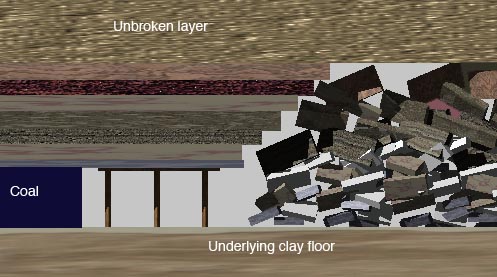
What this means is that the miner, working at the face, needs to support only the rock that is up about twice the seam height above his head (in those days women did not do the actual mining). And this could be done with relatively small tree limbs, called props. However, because the rock could break into pieces, the prop support would be distributed, by having a plank, or half split timber, as a bar on top of the prop. Putting one prop at each end thus gave a sort of “goal post” support. Thus, along the face, there would be, at about 4-5 ft intervals, these prop supports holding the roof up.(The coal is made slightly blue in the pictures to give a better contrast – sorry!)

Now, to get the coal out it was possible to put in mechanical assistance. The first step was to use a machine, rather like a large chain saw, that was pulled along the face, undercutting the coal, to give that first free surface. At the same time holes were drilled along the face, about 6 ft apart, with a stick of dynamite in each one. After the face was cut the coal was blasted down between shifts (7.5 hours) then the collier shift would come in and each man would have about 10 yards of face to load the coal from, and to re-support. To get the coal from the face, a rubber conveyor belt was run along the back end of the supports that were in place before the blast, and the coal would normally not break that far from the face. As the miner shoveled he would also put in a new set of timbers, overlapping the old, and supporting the new working area. Typically this would take another seven hours, with an ideal seam height being about 4.5 ft. Above that the coal volume to move was much greater, and below that it got a bit awkward. For example, below 2 ft thick you lie on your back, with a prop under your shoulder and shovel over your head – how would I know? Yes, there was a reason to go to college).
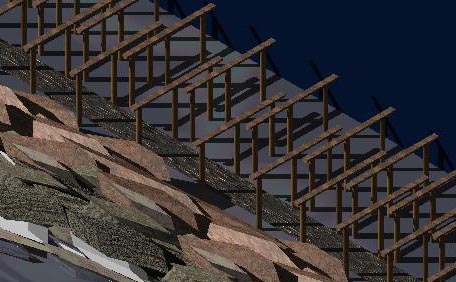
In the third shift, the men would come in and break down and move over the conveyor belt, and then remove the last row of wooden supports, bringing the roof down, beyond the new line of supports.(Smart folk would use a come-along and a chain to pull down the props, young idiots (guess who) would go in with an axe to chop them first).
The process needed mechanization and this required three different components to work. And these all came together in a period around 1960 – 65. Firstly there was a better way of removing the coal. The machine that was developed initially took the coal cutter power pack, and turned it on its side. By then putting a drum with picks on it, over the shaft to replace the cutter bar, the Anderton shearer was invented (named after its inventor). The drum rotated, and a shaped cover behind it moved the broken coal over onto the second part of the process.
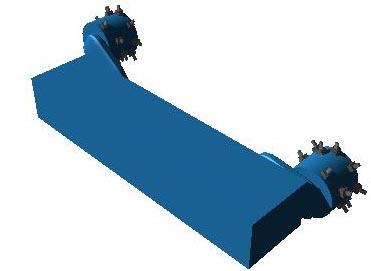
This is a rigid framed conveyor, made up of segments that can move against one-another, and with rigid metal walls. The shearer can ride either on top of, or along side this conveyor, and load the coal onto it. The conveyor then carries the coal to the end of the face, and onto a second conveyor, that carries the coal out of the panel.
It is the third part of the concept that makes the whole system viable, because we now add the powered roof support. These are sets of hydraulic rams that ride on one plate of steel, pressing a second up against the roof. They are connected to the conveyor by a horizontal ram.
The mining process is thus that first the shearer moves down the coal face, grinding off the coal to a depth of around 2 ft. After it passes, the rams on the roof supports, in turn, are released, so that they drop away from roof contact. The horizontal ram is retracted and the support moves forward until it contacts the conveyor. It is then raised, and re-supports the roof. Each support moves forward it turn, so that the miners (which now include women) are always under a roof of steel. After the supports are re-established, the horizontal ram extends, pushing the conveyor over into the open space where the coal has just been mined. The exposed roof rock then collapses into the open space behind the back of the supports.
If one were to look at the operation from above, and with the roof removed, it might look a little like this:
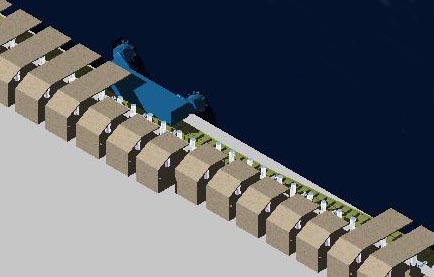
I have taken away some of the canopies of the shields so that you can see the conveyor snake after the shields move forward. The view closer in shows the conveyor and supports better.
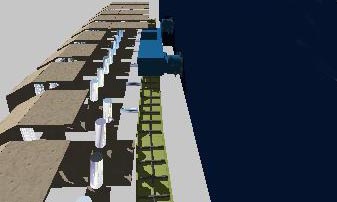
Because of the way the roof rock weight distributes, it is usual to drive entries out to the edge of the panel first, and then mine back to the main drive tunnels, rather than mining away from the mains. In part this is to keep the excess weight from acting on the tunnels the miners travel through. Because of the collapse of the roof as the coal is removed the panels usually start at the back of the section (known as a panel) and mine toward the main transport tunnel, with coal and people travelling in roadways on either side of the panel.

Over time the ground movement works to the surface, and the surface of the ground will drop, by some significant percent of the height of the coal removed, since the rock in the waste will crush and consolidate. This is called subsidence, and if the mining is carried out badly, then it can cause significant damage to surface buildings. However, if done properly, it should not.
I will cite two examples of the latter. Firstly in the height of mining and before North Sea Oil and Gas, Britain mined coal at a high rate of production, from where it was found. This included under the city of Coventry, which was at the time home to large manufacturing plants, with precision lathes. By back-filling behind the face props with the blown-in waste from the colliery treatment plant (called stowing the goaf), the waste was filled, and the ground movement minimized to the point that I only heard of one factory being closed for less than a week to realign their lathes.
The second example was in Duisburg in Germany, and a different problem. The town is a port on the Rhine, and over the centuries the river had eaten into the bed, so that the quays were becoming too high above the water for easy loading of the barges, and the town was losing business. They went to the local coal company and asked them to mine out seams under the harbor, and thus to lower the quays to bring them back in reach of the water. The miners complied, and lowered the area by over 11 ft. The area that was mined included highway overpasses, and a Shell oil storage facility in the middle of the river. The story goes that the tank farm manager went to the miners and asked them to tell him when they were going to start, so that he could drain the tanks as a precaution. They pointed out that the farm had actually already been lowered about 3 ft, as I recall the story.
As usual this has been rather a superficial description of a process, but hopefully it gives you more of a sense as to what goes on in a longwall mining operation.
Additional comment : It is possible to mine coal without using picks in a longwall, though it is a technology that has found much greater application in other industries, beyond mining.
Our thoughts and prayers go out to those in West Virginia at this time.
(RR comment: Dave has also written a follow-up post to this: More explanations of coal mine gas and coal dust explosions)